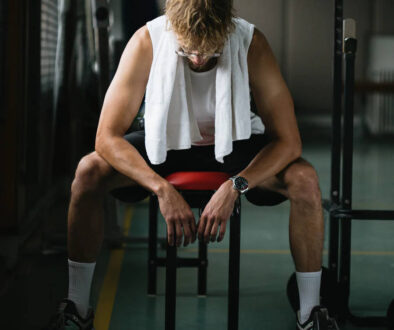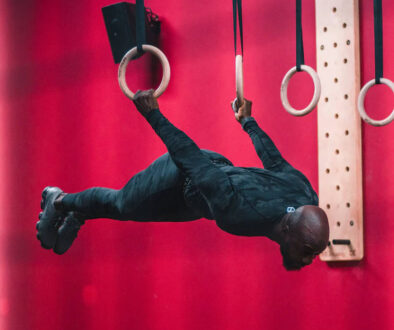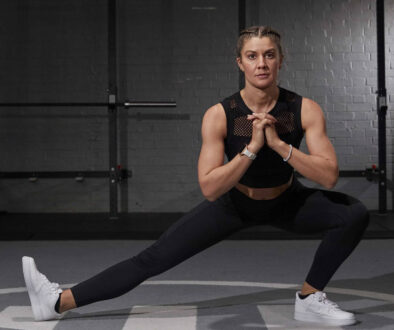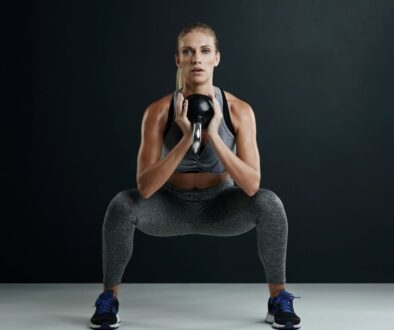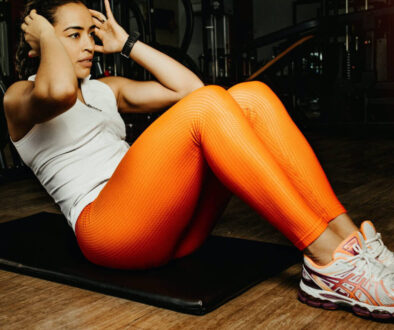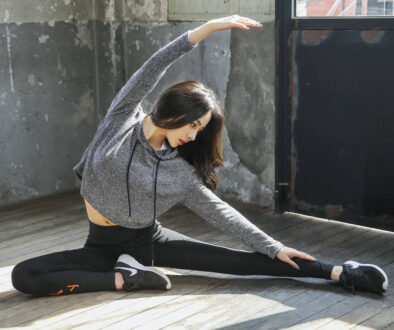6 Mistakes You Must Stop Making When Doing Deadlifts
Deadlifts are considered to be the king of all exercises. Now that royalty is involved, it’s only fair that we learn the correct techniques to perform this much loved gym exercise. What makes the deadlift stand out is that it puts to test every claim you’ve made about your power-lifting abilities in the gym.
The Common Mistakes When Doing Deadlifts and How to Avoid Them
You can dodge your form while performing a squat, and have someone spot you during a bench press, but with deadlifts, it’s just you against “dead” weight. It’s not just enough to know the correct form (which we will outline too!), but it’s crucial to know what mistakes you need to avoid and why you need to avoid them.
Without any further ado, here are the 6 mistakes you must stop doing when performing deadlifts.

1. Distance From The Bar
For a deadlift to be efficiently executed, the barbell must move in a perfect vertical line. From the point that you lift the barbell, to the finishing point, any horizontal path should be as minimal as possible. You want to lower the barbell right onto the position where you first picked it up off the floor.
You have probably noticed people standing too far away from the barbell and when they pull it up, it ends up being an isometric movement that targets your front deltoid. Not only is that not a deadlift, but you’re not lifting any load that’s worth being lifted.
When you’re at a distance from the bar, different kinds of muscles will contribute to picking that weight up. With these additional forces at work, you’re dispensing more energy than is needed. You want to be able to lift heavier weights and overload with a natural progression.
Remember, the bar must be placed directly over the middle of your feet for an accurate lift-off.
2. Deadlifts Aren’t Squats!
This is a common mistake by beginners especially those trying to pull off their best impression of the deadlift they’ve seen on the Internet. Such a technique engages a low-hip posture with an upright back. The lifter’s body is automatically placed behind the bar and with the distance increased between the barbell and the lifter’s center of mass, the attempt to lift the bar off is imbalanced.
When a heavy deadlift is performed from a squat-like set-up, the body shifts its starting position before the weight is lifted off the floor. Consequently, their position ends up with their shoulders in front of the barbell and the hips higher than the knees.
When a deadlift is properly performed, the lats transfer their power to the hips and the lower back which ultimately assists in lifting the bar. It should be noted that this even distribution can only occur when the shoulders are in front of the barbell and the bar is parallel to the scapulae. A squat set-up is costly and without benefit.
That tiny window where the body re-organizes itself from the incorrect posture does not give the lats enough time to generate the tension needed to support the lumbar spine. It’s an open invitation to a lower-back injury.
Remember, your form should be such that the hips are more elevated than the knees and the bar is parallel to the scapulae and just behind the shoulders.
3. Not Working Against The Resistance
The lifter must be pulling the barbell up in such a way that the rod makes contact with the top curve of the rim in the hole of the plates. If that isn’t what’s happening, there won’t be much resistance and it becomes difficult to generate an isometric contraction in the spine and lats.
When the weight is jerked off the floor without working against the resistance, the lumbar flexion gets more engaged than needed and the lower back stiffness that’s needed for a secure pull against gravity is overlooked. Such a movement ends up with complaints of severe lower back pain.
Now that you know how to set up the bar properly, your last technique before lifting the weight is to pull your chest up high while simultaneously pulling the bar against the weights. You might even hear a “clink” sound if there’s a small gap between the rim hole and bar collar which is an excellent sign that you are ready for lift-off.
4. Back Angle Shifting Before Lift-Off
When the knees straighten before the bar has left the floor, the back angle will naturally change no matter how firmly you’ve maintained it. You end up with a more horizontal angle and an acute angle at the hips.
The issue with having straight knees prior to lift off is that the quads won’t be engaged and this in turn turns the classic deadlift into a Romanian deadlift. Pressure will accumulate on the posterior chain and that will result in one or more of the following 3 problems: lots of back pain, premature fatigue, and a weak lift-off.
The correct technique is when the back angle remains in its initial stance when the bar is lifted away from the floor and that happens when you extend the knees.
5. Unnecessary Lower-Back Hyper Extension
The final part of the deadlift is when the hips thrust forward to a point where the bar won’t let them extend any further. A common mistake among lifters is that they hyper-extend the lumbar spine instead of the hips or in addition to, and this is an extremely unnecessary movement. The lumbar spine must be locked from the get-go all the way to the end.
In some situations, the glutes aren’t strong enough to complete the movement which leads to lifters relying on their lower back. Variations in the technique may seem harmless at first but the continuous stress added to the lumbar will eventually catch up.
6. Too Many Reps
There are tons of talk about how your deadlift form should be, but what about when you actually perfect it? How many reps do you do?
Deadlifts target a lot of muscles and joints and if you keep doing them especially after the fatigue starts to set in, you’re at risk of a spinal column and lower back injury. The recommended rep range is anywhere between 6-13 reps.
A safer and equally effective alternative to when you have reached the rep limit on your deadlift is the barbell hip thrust. It’s primarily for your glutes and hamstrings but it targets nearly the same muscles and joints as a deadlift minus the risky force.
Summary
Now that you know what mistakes you need to avoid, and why you must avoid them, let’s conclude all the things we’ve learnt about how to perfectly and safely perform a deadlift.
- The bar must be position directly over the middle of the feet and if you set it any further than that, the deadlift becomes a poorly executed front-delt raise.
- The bar must be parallel to the scapulae and just behind the shoulders.
- Listen closely to the “clink” for when the bar collides with the rim of the weight plates so that you know you are not adding any slack to the bar before pulling it up.
- Your lower back angle must be locked into the same position from the pull all the way down to the drop. This happens only by extending the knees.
- Finish off the deadlift with an active and sturdy hip extension.

Article by Wassay Syed





